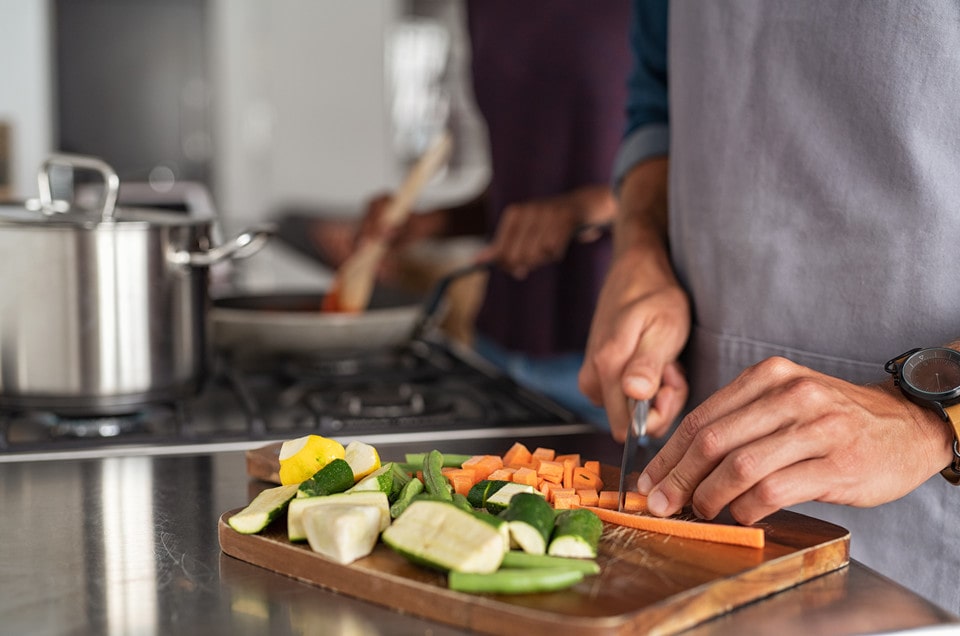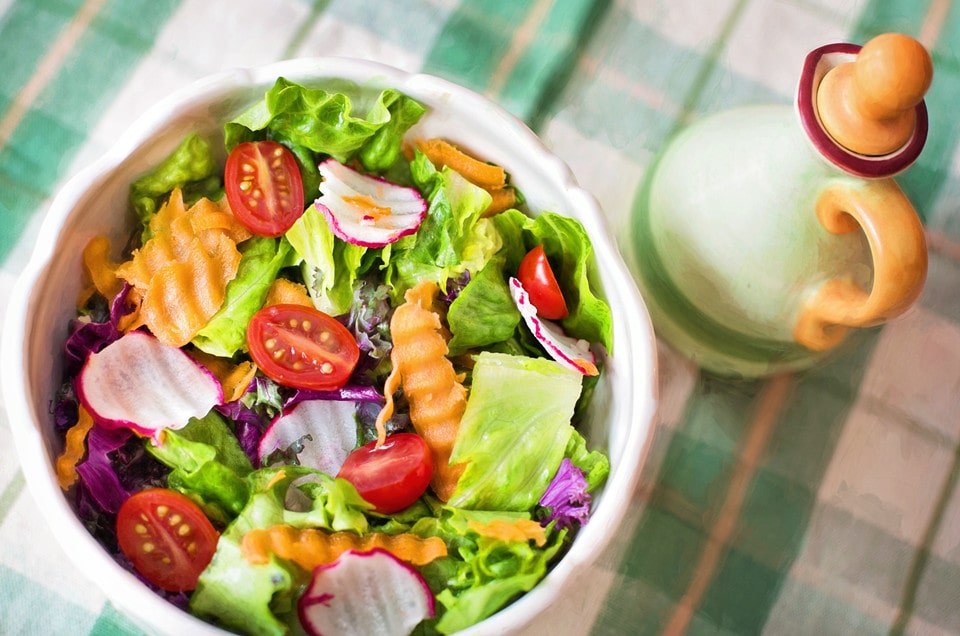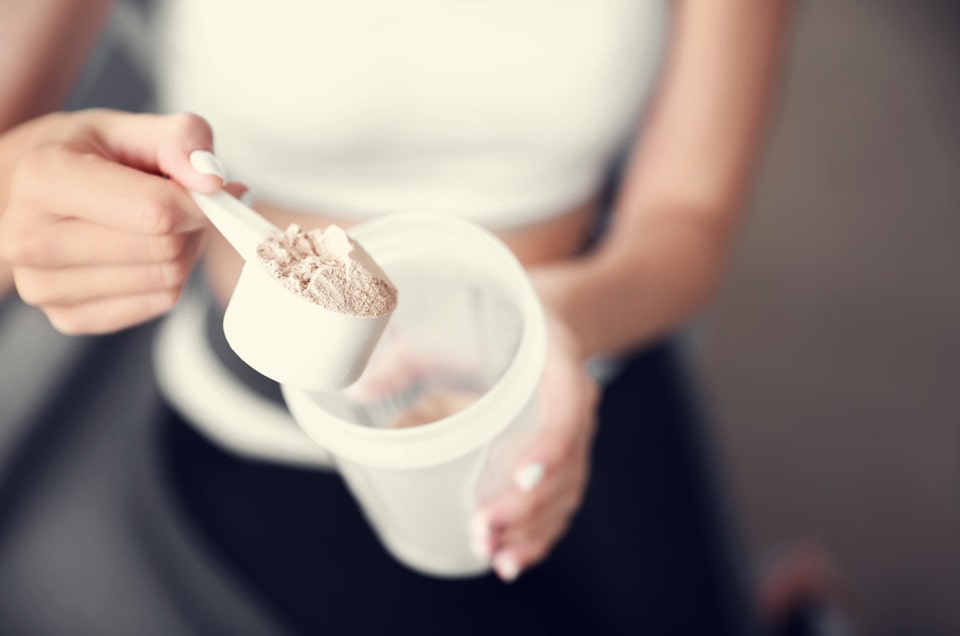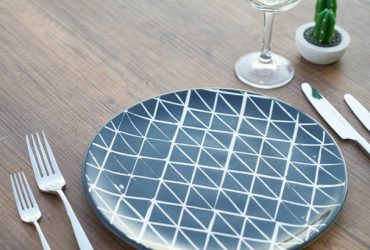There are hundreds of diets out there. Perhaps you’ve tried dozens of them, with no luck, or they worked for a while, but quickly led you to gain weight again as soon as the diet was over.
The cutting diet isn’t much different than other diets, mostly focusing on cutting calories and building muscle. While you have to track calories, there are no foods that are completely cut out.
That being said, some foods are better to eat than others. This article will discuss more about the cutting diet, including the 27 best foods for cutting.
What Is a “Cutting Diet”?

A cutting diet is also commonly referred to as shredding. The purpose of a cutting diet is to help reduce body fat and maximize lean mass. You do this by staying in a calorie deficit, eating a good amount of carbs and proteins, and weightlifting.
Focusing on these foods and lifting weights helps to promote muscle growth so you don’t lose muscle when you start cutting back on calories.
It is a diet frequently used by those who are into bodybuilding. This diet isn’t made to be long-term and usually only lasts somewhere between two and four months, so it is a great option for those trying to lose a little weight in between holidays.
Is the Cutting Diet for You? Pros and Cons

Cutting isn’t for everyone. If it was a magical cure-all that worked for every person, there would be a lot fewer diets out there. However, it may be the option for you. Here are some pros and cons so you can decide if cutting is for you.
Pros
• Aids with fat loss
• Builds muscles and makes you more conventionally attractive
• Is a simple diet, only requiring calorie cutting and light exercise
• Increases athletic ability
• Improves insulin sensitivity
• Can increase the lifespan
Cons
• The cutting diet takes a lot of time, planning and tracking
• Calorie counting can be triggering for some, or lead to dangerous practices, like chronically undereating
• Will often feel hungry, especially at the beginning
• Can reduce bone density, sleep quality, and sex hormones
27 Best Foods for Cutting

The cutting diet focuses mostly on foods heavy in protein and fiber, though carbs are good as well. There are a variety of options, so you can easily mix and match to your taste.
1. Whole eggs
2. Sweet potatoes
3. Seeds like flaxseed and chia seeds
4. Chickpeas
5. Avocados
6. Artichokes
7. Zucchini and other squashes
8. Quinoa
9. Watermelon
10. Lentils
11. Beans
12. Peas
13. Broccoli
14. Low-fat cheese
15. Hummus
16. High-sugar fruits (after a workout)
17. Tofu
18. Nuts
19. Starchy vegetables
20. Whole wheat pasta
21. Apple cider vinegar
22. Shrimp
23. Fish, like salmon and tuna
24. Whole grains
25. Lean meats like lean beef, turkey, and chicken
26. Dark, leafy greens
27. Cottage cheese
Supplements for When You’re Cutting

Since you aren’t eating as much, it can be hard to get all the nutrients you need. Additionally, eating enough protein in a day can be very difficult unless you add a protein supplement. Thankfully, there are a large number of options to choose from.
Protein supplements and powders are essential for cutting diet. Most people find they prefer whey protein, but there are a lot of options out there to provide you with a flavor, the amino acids, and the protein you need. A common practice is adding protein powder to a dessert like a milkshake or ice cream.
Multivitamins are always important, no matter your diet. They contain many essential nutrients people don’t get in their meals, like magnesium, calcium, and folic acid.
Amino acids are also important. Sometimes, other supplements you are using may contain the right amino acids, like protein powder, but sometimes you may be missing out. If that is the case, there are also branched-chain amino acids or BCAAs. This helps to prevent the loss of muscle, even when in a calorie deficit.
Glutamine is another important supplement. Glutamine is heavily reduced after exercise like cardio. This is thought to be part of the reason muscle is broken down after an intense exercise, so being able to increase the amount in your system with supplements can help ensure you don’t suffer a loss of muscle mass.
Pre-workout is the final supplement we highly suggest. Proper pre-workouts for the cutting diet will contain something known as L-arginine or nitric oxide booster.
This supplement helps to release growth hormones, provides healthy cholesterol, increases fat burning, and increases muscle growth. It also gives you a boost of energy, and the ability to go longer when exercising due to its vasodilating properties.
11 Tips for Your Cutting Diet

Dieting can be hard, and you may constantly feel hungry. There are tips you can keep in mind to make your progress easier by reducing your hunger, and faster by adding in other exercises and benefits.
1. Try Cardio
Though weightlifting is the primary exercise in a cutting diet, cardio can be beneficial too. Using aerobic exercises like cardio allows your body to focus on burning fat. Since dieting has a habit of losing muscle, this allows you to burn fat faster, be on the diet for a shorter time, and lose less muscle over that time.
2. Liquid Calories Can Be Dangerous
Most of those that practice a cutting diet warn you of liquid carbs. However, any liquid calories can be bad. They are often considered empty calories because you are ingesting calories and not feeling full as these calories don’t have any benefits to them.
You primarily want to avoid drinks high in sugar, like sodas, alcohol, and energy drinks. While things like your morning latte can still be bad, the milk in it has protein in it, which can make it more filling.
However, reduce liquid calories where possible. This is an easy way to reduce your daily calories without having to cut what you eat.
3. Meal Prepping Can Make Things Easier
When you get home from a long day of work, you don’t always want to cook. This means that you will often just grab whatever is easiest. Unfortunately, whatever is easiest is usually full of calories and doesn’t contain very much nutrition.
If you plan and prep all of your meals in advance, you don’t have as much of an excuse not to make them. Some can be eaten cold, while others you only have to pop into a microwave for a few minutes before enjoying. You also made the meal, so you already know all of the calories in advance.
4. Always Stay Hydrated
It is always important to stay hydrated, especially when you are dieting. Drinking plenty of water can help you feel more full and helps speed up your metabolism for a short time. We also get a lot of our water from our food. When you are cutting your calories, you are also reducing your water intake, so you have to remember to drink plenty of water.
5. Use Refeed and Cheat Days to Help You Out
Cheat and refeed days are a part of the cutting diet. Refeed is more common, but both can be used. A cheat meal is just a meal where you don’t care about the calories and can eat whatever you want. This is usually done anywhere between once a week to once a month.
Refeed days are when you focus on increasing your carbs for that day much higher than normal. This does often mean you are taking in a higher amount of calories for the day, but there is a benefit to having a carb-heavy day.
Ingesting a higher amount of carbs than normal has many benefits including restoring glucose stores, aiding in exercise, balancing hormones, and increasing metabolism. While you will temporarily gain weight during this time, it is mostly water weight and should go back away over a few days.
However, you don’t want to use these days as an excuse to go crazy. You need to still plan them out a little, to make sure you are still staying in a calorie deficit and aren’t overeating.
6. Add Fiber to Your Diet
Fiber-heavy foods like non-starchy vegetables are full of nutrients. These nutrients and the digestive benefits that come with fiber help to keep you fuller for much longer and help you to stay in a calorie deficit.
7. Weigh-in Regularly
People fluctuate in weight daily. It depends a lot on how much water weight you are holding on to, your most recent bowel movement, and more. However, by weighing daily, you can take a weekly average. This gives you a better idea of how much weight you have lost than just a daily or weekly measurement.
8. Track Your Calories with an App
Keeping track of your calories by hand can be a pain. Many apps, both free and ones you pay for, can provide you with a lot of ease. They allow you to scan barcodes and put in foods easily so you don’t have to do the math. It is always worth double-checking the numbers though because sometimes they are a little off.
9. Change Your Calories as Needed
As you lose weight, you don’t have to eat as much. If you don’t adjust your calories throughout the process, you may end up one day no longer in a calorie deficit but maintaining or even overeating. By checking in about every ten pounds or so, you help to just check in with yourself and make sure you are still doing what you need to.
10. Look at Example Meals for Ease
Trying to figure out what you can eat and making meals out of it can be overwhelming. Thankfully, you aren’t the only one doing this diet. There are plenty of other people who are also following this diet plan.
Many of them are more than willing to share their meal plans and provide ideas for your meal. You can either talk to them personally or look for blogs about ideas of what to eat. Most of the time, you can find a whole weekly list, with all meals included, even snacks.
They still might need slight adjustments to fit your exact calories, but it gives you a good idea of where to start.
11. Don’t Be Afraid of Carbs
Most diets steer you away from carbohydrates, listing them as bad for losing weight. However, healthy carbs like fruits and bread can be very beneficial. This is especially true if you are going to add cardio to your plan, but can be a good idea even if you don’t. If your meals don’t often have a lot of carbs, try to do a refeed day once or twice a week.










